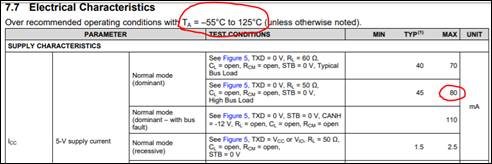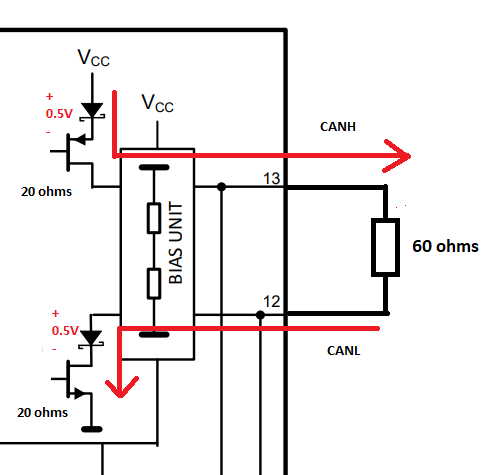Team,
My customer is looking at the Normal mode (dominant) 5V-Supply current (Icc). They think max current parameter 80 mA considers Ta = 125C. Could you please help us understanding how Icc spec varies with ambient temperature Ta? They are looking for Icc when Ta = 85C and Ta = 95C.
Thanks
Viktorija



